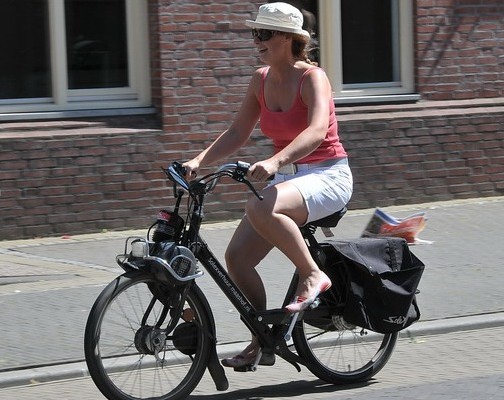
Scooter Safety for Riders and Other Motorists
September 23, 2009
They are popping up everywhere; on college campuses, in urban areas, neighborhoods, and in retirement communities. Whether it’s for fun, cost savings, environmental considerations or out of practicality, scooters and mopeds are growing in use and popularity. While these scooters are zipping about, everyone on the roadways needs to take extra precautions with mopeds and scooters in the driving environment.
Motorist should keep in mind that it is difficult to judge how fast a scooter or moped is traveling.
They are also smaller, difficult to see, and appear farther away than they really are. Maintain your scan of the road to ensure you are aware of their location and continually check your blind spots. Always manage your space cushion and continue to adjust with the flow of traffic as you never know when a scooter will need to make an evasive maneuver. Increase your following distance to a minimum of four seconds in ideal weather conditions and 5 seconds in inclement weather and at night. Even wind can affect the stability and direction a scooter travels. Dim your high beams at night when approaching a moped or scooter as they are more susceptible to their blinding affect.
If traveling by a moped or scooter take extra precautions. Check to make sure you have met all the legal licensing, registration and equipment requirements for your local and state area before travelling on the road. Some vehicles with a motor capacity of 50cc are classified as a motorcycle and require a Motorcycle Safety Course. Know before you go. It is helpful to take a motorcycle practice test prior to taking your safety course.
Make sure your equipment is working and in excellent condition. Poor tire tread, improper inflation, worn brakes and equipment malfunctions can be huge problems on the road. Evaluate your load, cargo and whether to have a passenger as they directly affect your vehicles stability, performance and ability to maneuver.
Wear clothing that will give the greatest protection in a fall. Choose clothing that is light, bright and snug. If traveling during dawn, dusk or nighttime hours, add reflective tape to clothing for increased visibility. Consider boots, a jacket, long pants and gloves. Protect your eyes with safety glasses or goggles.
Head injury is a leading cause of death and disability in moped and motor scooter crashes. Wearing a helmet is the single most effective means to prevent head injury. Ensure that your helmet fits properly and is Department of Transportation (DOT) approved. Helmet use is mandatory in most states.
On the roadway, give yourself plenty of space from all sides. Travel in the center of the lane and if riding with other motor scooters travel in a staggered formation. Always drive defensively; looking for an escape route, should you need to make an evasive maneuver. Keep a three to five second visual scan and be sure to check your blind spots. Turning your headlights on during the day can improve your ability to be seen by pedestrians and other vehicles. When riding, your hands should be on the handlebars and your feet on the floorboards. Watch out for road hazards and defects. Signal well in advance, and consider using hand signals for extra safety.
Be extra cautious when approaching driveways, parking lots, and intersections. Reduce your speed for lower visibility conditions such as dawn, dusk, nighttime and poor weather. Avoid having sudden starts, braking and quick turns as they cause instability.
When reaching your destination, park on level ground, turn off the engine and if you have any passengers let them get off the scooter first.
With awareness and a few extra precautions, mopeds and scooters can operate safely on our roads.
